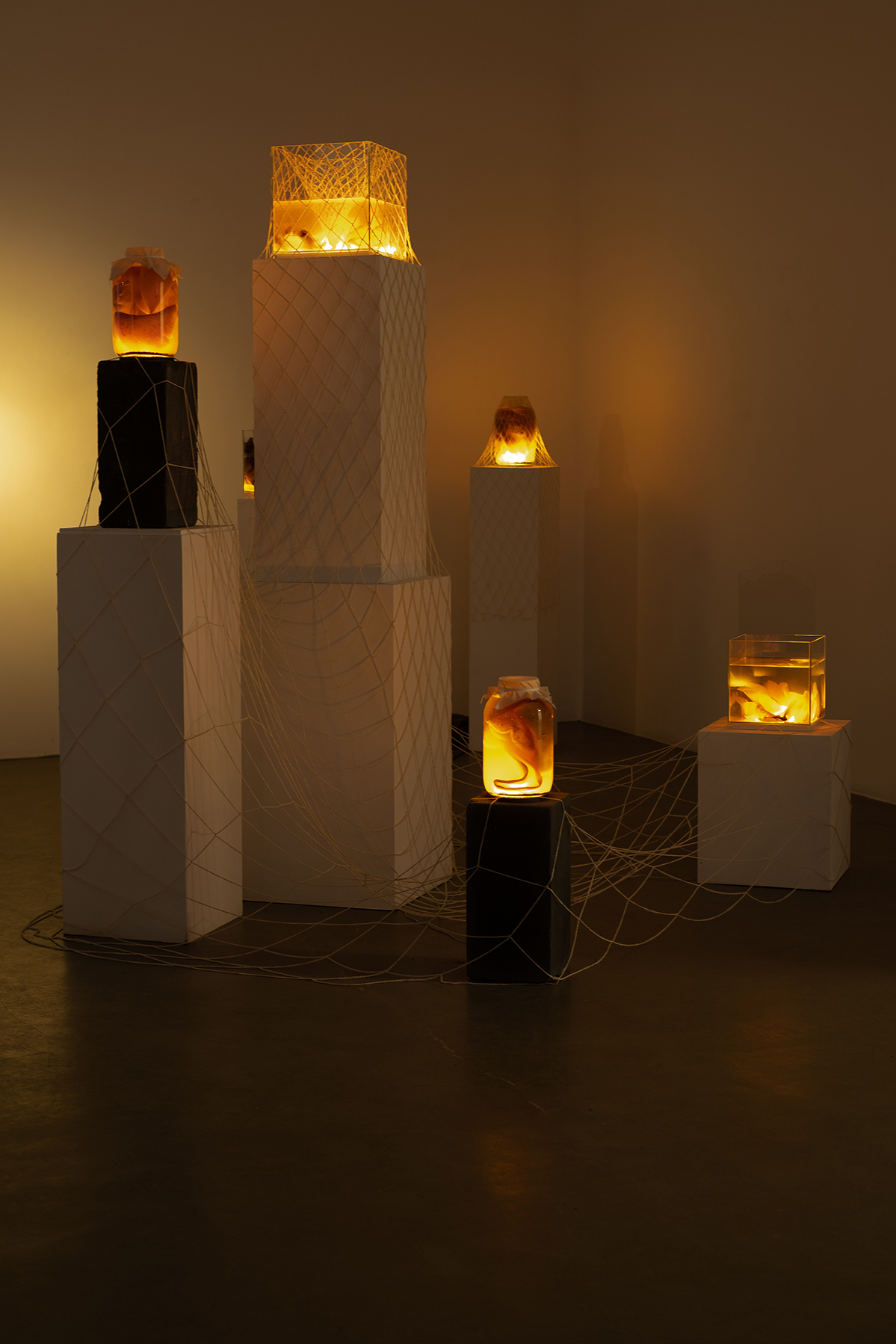 |
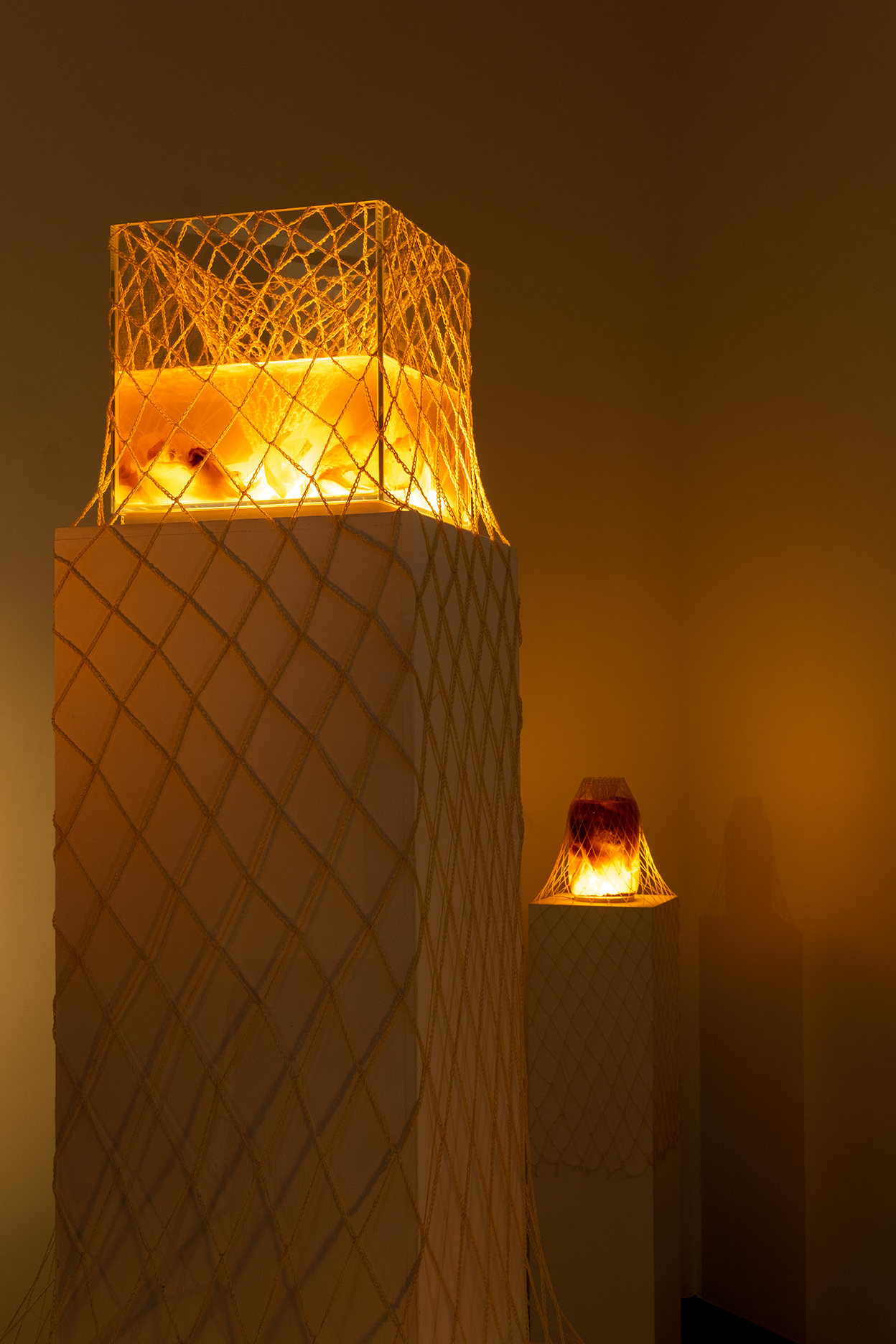 |
|
Monica LoCascio’s artistic practice focuses on materiality informed by her research onmemory, fermentation, epigenetics, heritage crafts, and hierarchies of knowledge and power. For SPACELab, she collaborated with Ulrike Kuchner, astrophysicist, artist, and interdisciplinary researcher of art-science, who studies how galaxies form, grow and coevolve together with the large scale distribution of matter in the Universe. Passenger IV and Still Untitled examine the symbiosis of fermented bio-materials (SCOBY) and salvaged fibres, exploring the fluidity, vulnerability and tension of the organic growth of structures, and the ethics and culture of humans trying to control this growth.
| |
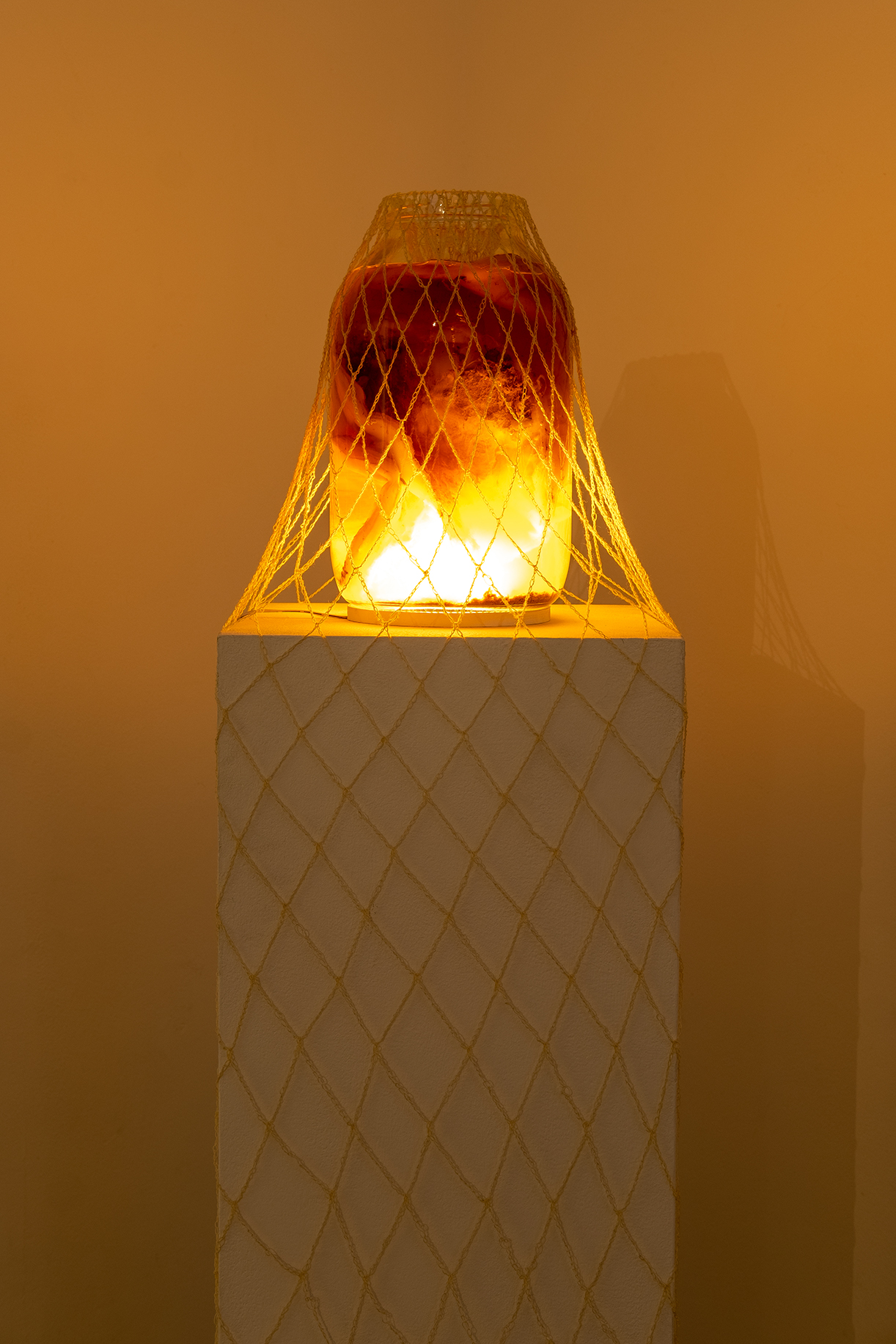 |
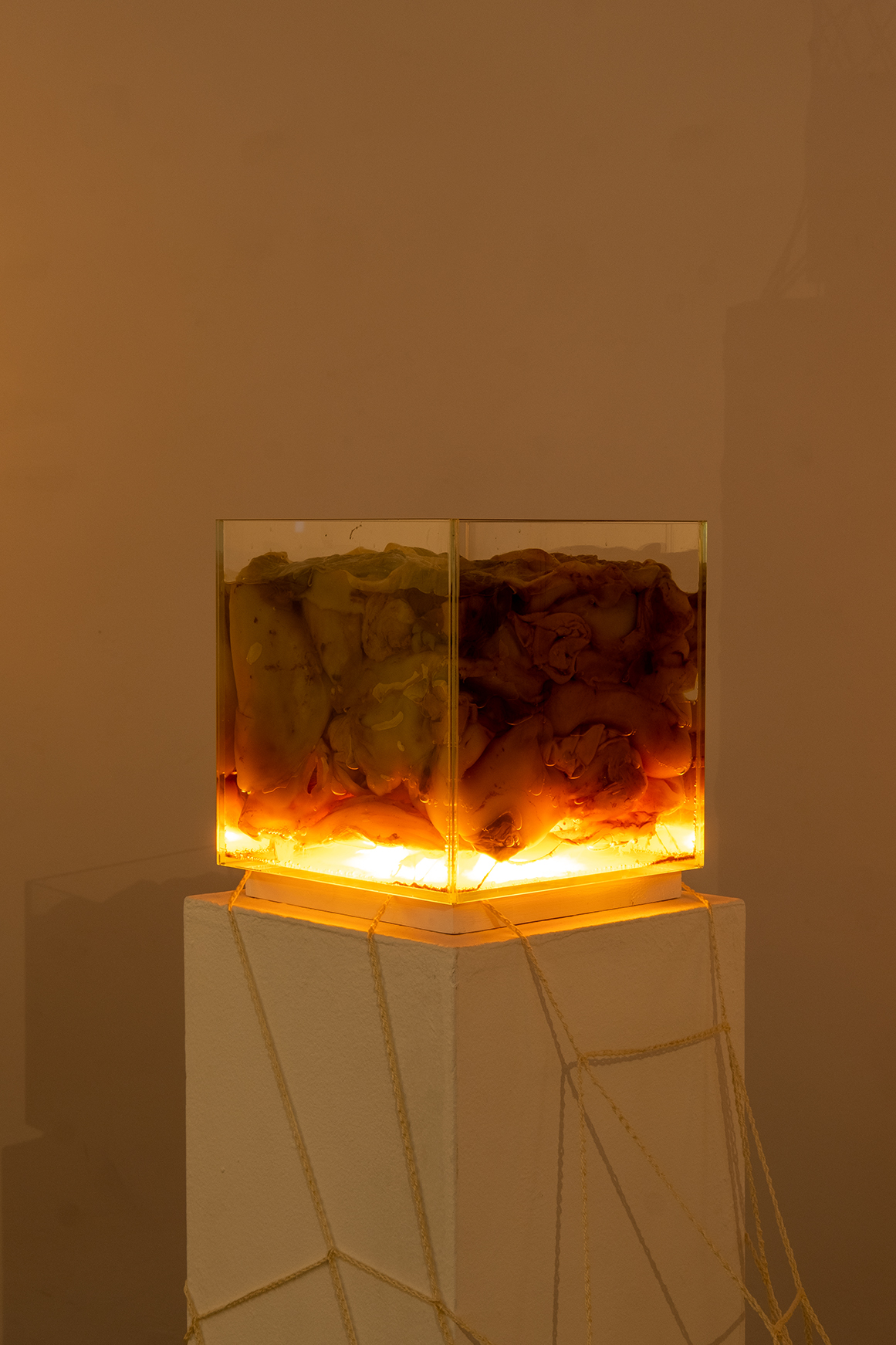 |
|
LoCascio’s Passenger IV is a meditative exercise of discerning where we end and the other begins, of separating and connecting. It examines the emergence, growth, and symbiosis of material and process and our human interference in this order. A large net crafted from salvaged crocheted cord in a single stitch that reflects on both natural and human-made patterns link five tanks of fermenting tea hosting SCOBY (Symbiotic Culture of Bacteria and Yeast) — a slimy, fermented, placenta-like biofilm created by generations of billions of bacterial and fungal collaborators. This colony co-exist and works for this art piece and therefore for us. As part of her practice, LoCascio decides when the SCOBY sleeps and eats, and when it dies, thereby exploiting its aliveness and body to create value in the form of textiles that are later used for embroideries such as Still Untitled. The delicate embroidery uses the skins of bacterial cellulose and motifs that extrapolate from the artists’ habitual drawing practice and challenges our human tendency for instant pattern recognition.
| |
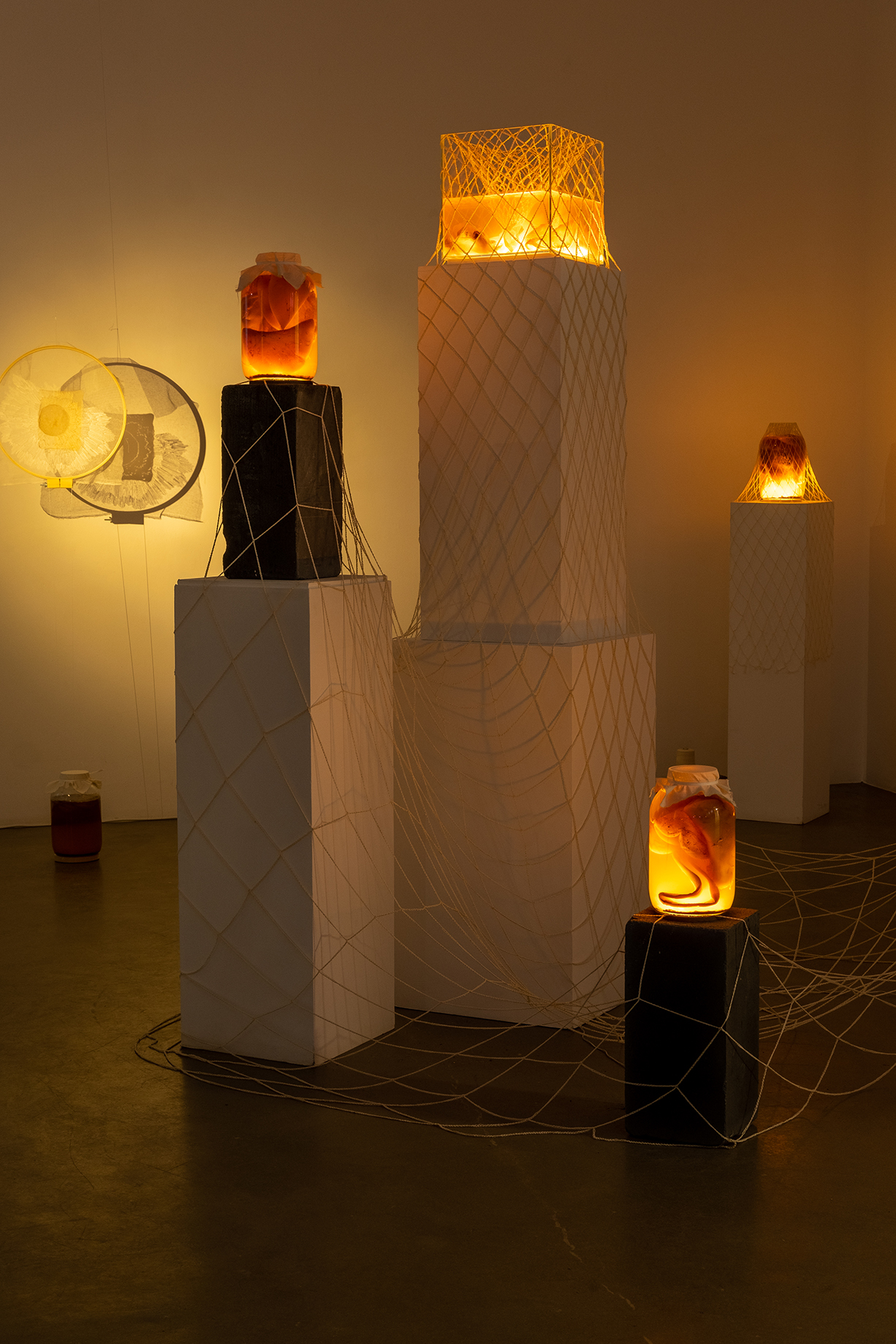 |
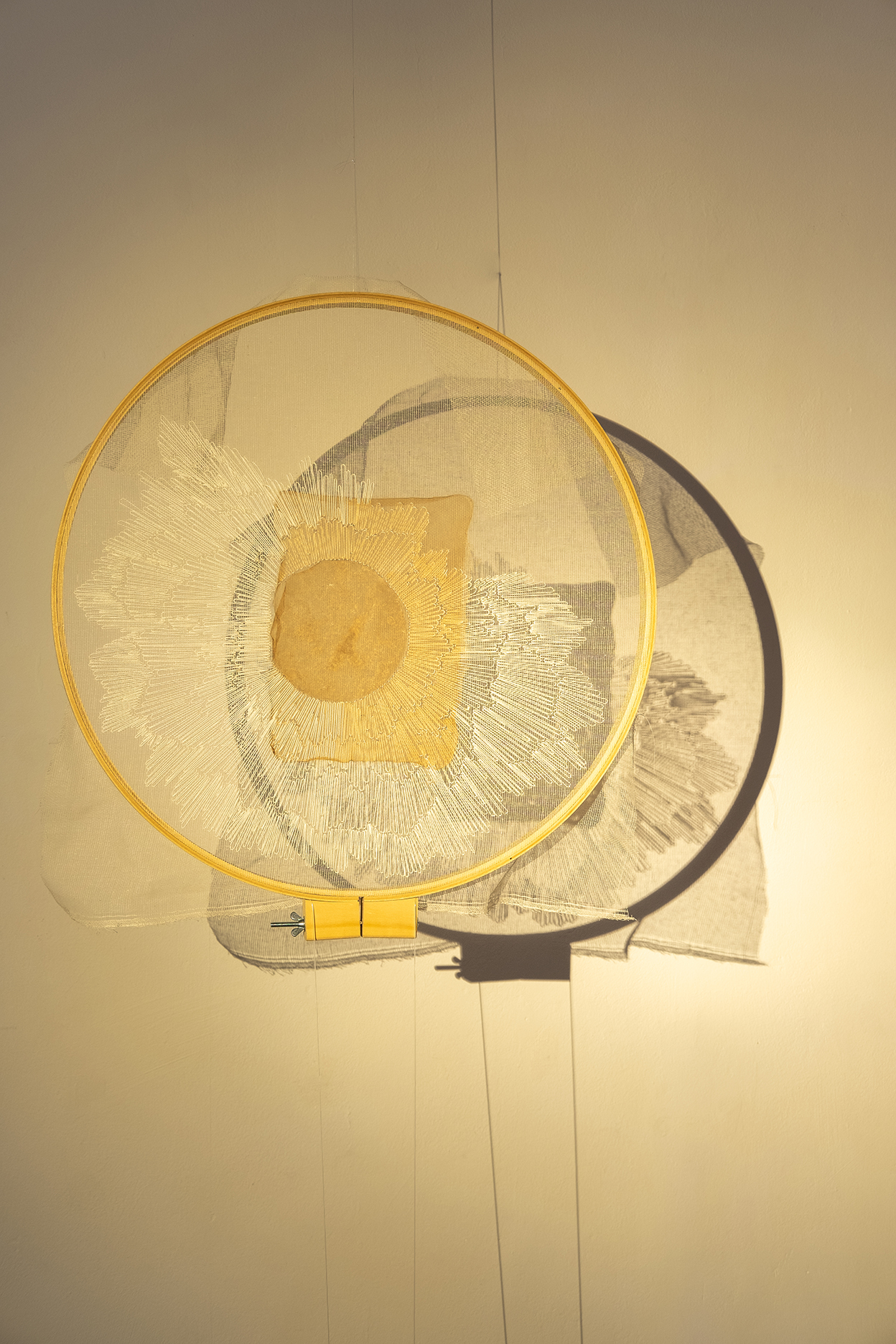 |
|
Passenger IV allows us to abide in a symbiotic world for a moment. Every stitch on the net depends on the other: changing one creates a ripple effect that impacts the entire geometry of the web. Its structure evokes the patterns of the cosmic web, the largest structure known to humans that traces all matter in the Universe and manifests the scaffolding of our existence, our growth and our conclusion. The early Universe was populated by small over-densities that grew in complexity through gravity and tidal forces to form the cosmic web that is home to over two trillion galaxies today. The galaxies are embedded in filaments of gas and dark matter that may be able to both protect the galaxies that grow inside them and to dramatically change their composition and character.
Photography credits:
| |
|
|
|
|
|
|
|
|
|
|
|
|
|
|
|
|
|
|